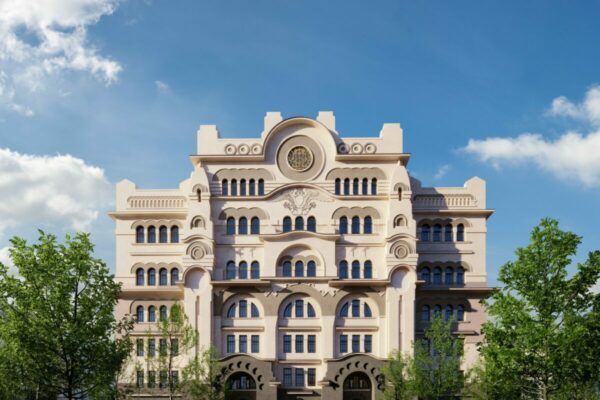
Forbs o Beogradu na vodi: „Loš vic“ Abu Dabija
Premijer Aleksandar Vučić juče je sa desetog sprata prve od dve kule „Beograda na vodi“, najavio da će tim projektom glavni grad postati atrakcija cele istočne Evrope. Međutim, da li se ovom projektu „dobro piše“ nakon teksta koji se pojavio u čuvenom Forbsu, ostaje da se vidi.
Članak koji se o ovom projektu pojavio pre tri dana na Forbsu, možda ne otkriva nešto mnogo prosečnom srpskom čitaocu, ali svakako je interesantno kako list, koji čita svaki biznismen „koji drži do sebe“, gleda na ovaj projekat koji će „promeniti lice Beograda“.
Naslov teksta već sve govori. „Pogled na „loš vic“ Abu Dabija: Projekat Beograd na vodi“ (A Look At Abu Dhabi’s ‘Bad Joke’: The Belgrade Waterfront Project). Tekst prolazi kroz istoriju tog dela grada kao i samog projekta, koji je najavljen 2012. godine od strane tada prvog potpredsednika Vlade Srbije Aleksandra Vučića i to „ploveći Savom sa Rudolfom Đulijanijem“. Već 2014. nađen je investotor – Igl Hils (Eagle Hills) Mohameda Alabara koji je došao sa „idejom“ da u ceo projekat uloži svojih 4 milijarde dolara. Uskoro je predstavljen projekat „grada za bogate“, planiran u tajnosti, bez učešća javnosti, što je građane dočekalo nespremne. Kako navodi Forbs, označujući ovaj projekat onim od nacionalne važnosti (kao što su aerodromi i vojne baze), vlast je izbegla zakone Srbije i urbanistički plan i samo usput menjala zakone, navodi list. To je upravo razlog velikog otpora građana prema ovom projektu, koji su u više navrata protestovali.
U zaključku teksta, Forbs piše da su se obećanja od aprila 2015. kada je ugovor potpisan do sada malo promenila, pa tako „umesto džaka punog milijardi dolara“, Igl Hils treba da investira 160 miliona dolara, dok će Srbija dobiti dodatnih 300 miliona dolara u pozajmicama. „Zauzvrat“, Igl Hils dobija 68 odsto profita i zemlju na 99 godina.
Tekst se završava izjavom srpskog arhitekte Mirjane Milanović:
„Nada je u tome da u Beogradu gotovo uvek sve propadne. Zato se nadajmo da će se desiti najgore, što bi bilo ono najbolje što se može desiti .“
Izvor: BIZLife
Piše: M.M.
What's your reaction?
Komentari
-
-
ja
http://www.forbes.com/sites/wadeshepard/2016/12/08/inside-abu-dhabis-bad-joke-the-belgrade-waterfront-project/#12a1d7bd6693
-
Sale
Meni radi normalno na SBB-u. Radilo mi je i prvog dana kad se pojavio text.
-
-
Original text :-)
It was little more than a large hole in the ground sprouting a platform of scaffolding in a weed-strewn abandoned lot behind an old rail depot on the bank of the Sava River in Belgrade, but it will soon become a sparkling new downtown area replete with skyscrapers, five-star hotels, and luxury apartments -- accompanied by a huge amount of controversy. Since the 1920s the waterfront area around the main train station was an eye sore for Belgrade, the capital of Serbia in southeastern Europe. It was essentially a disconcerting, empty hole smack in the center of the city. Various initiatives have been proposed over the years to bring the city down to its waterfront to create a new social and commercial epicenter, stimulate the local economy, as well as to simply make use of a centrally located area that was being neglected. A large sign for the Belgrade Waterfront project looms above the street near the old train station. Image: Wade Shepard. A large sign for the Belgrade Waterfront project looms above the street near the old train station. Image: Wade Shepard. Then in the spring of 2012 a plan for redeveloping Belgrade’s waterfront was revealed. While on a cruise along the Sava River, Serbia’s First Deputy Prime Minister Aleksandar Vucic sat before an ensemble of cameras and presented his city’s ambitions to his distinguished guest, Rudolph Giuliani. This great initiative was pragmatically christened the Belgrade Waterfront project. Two years later an investor emerged, and one of the biggest urban renewal projects in Europe gained momentum. This investor was not a local power player or even a wealthy construction baron from the west of Europe or even from Russia, but Mohamed Alabbar — the man runs the Abu Dhabi-based development firm Eagle Hills, who is best known for founding Emaar, the company responsible for building the Burj Khalifa, the world’s tallest building, and the Dubai Mall, the world’s largest shopping mall. In addition to their U.A.E. developments, Eagle Hills has been active internationally, carrying out projects in 14 countries that are worth upwards of $20 billion -- including a prospective 700-square-kilometer, 5 million person new city district in Cairo. Alabbar’s biggest selling point was that his company would not only come in and develop Belgrade’s waterfront or merely provide the loans for such, but that he would do it all with his own money. $4 billion of pure foreign direct investment was committed to Belgrade to build a world-class, uber-modern downtown district unlike anywhere in the entire region. Essentially, an Abu Dhabi company promised to show up with bags of money and Serbia basically gave them free reign to do what they wished. And what Eagle Hills wished to do was to was to build Belgrade a venerable city for the rich. Covering an expanse of 177 hectares, the new development would feature a million square meters of luxury apartments for 17,000 people, 750,000 square meters of office and commercial space, along with a clutch of five-star hotels, a wall of skyscrapers that will feature the tallest building in Southeastern Europe, an opera house, and the largest shopping mall on the continent -- which altogether was projected to create 13,000 much-needed jobs. This wasn’t just a project that would add to the urban offerings of Serbia’s capital city but would change its face completely. Scale model of the Belgrade Waterfront project. Image: Wade Shepard. Scale model of the Belgrade Waterfront project. Image: Wade Shepard. Sounds good — Belgrade is a city that is still reeling from the fallout of the breakup of Yugoslavia, has an unemployment rate that's north of 20%, in a country where the average monthly wage is a mere $425. In point, they could really use Abu Dhabi's $4 billion. In January of 2014, Vucic, who would soon become Serbia’s Prime Minister, and Eagle Hills's Mohamed Alabbar publicly reveled the master plan for the Belgrade Waterfront, and the biggest development project in Serbia's history was officially unleashed. Meanwhile, the people of Belgrade were caught off guard. The entire project was reputedly planned in secret, with no public participation. Having been classified as a project of national significance — like an airport or military base — Belgrade Waterfront was fast tracked, which meant that certain bureaucratic hurdles could be sidestepped -- such as the otherwise mandatory competition for the project’s architectural design. (The government claimed that there actually was a competition, but it was held in Abu Dhabi and no Serbian architects were apparently invited, and who actually designed the project is still unknown). There was also no open bidding process for the tender, as is standard operating procedure. When it was highlighted that Serbia’s government was violating its own laws, such as the building codes which are outlined in Belgrade’s General Urban Plan, they reputedly just changed the laws. Due to this and other factors, the Belgrade Waterfront project has not been well-received by a large segment of Belgrade’s population; their discontent being succinctly summed up by local architect Ljubica Slavković: “A megalomaniac project backed by the promise of Abu Dhabi money is forcefully pushed forward by sidestepping laws and ignoring existing urban fabric, in order to secure the future identity of Serbia and its capital.” “It's like a bad joke,” said Mirjana Milanovic, a Serbian architect who is based in Amsterdam. “It’s just another shopping mall in a country that has no money to buy anything.”
-
Pera Kojot
No comment
-
MilanChe
"Serbian architect who is based in Amsterdam"... Pametnom dovoljno...
-
A bre Milanche
Dovoljno za šta?
-
-
Sone
John Perkins je sve objasnio u knjizi ispovesti ekonomskog ubice
-
Radivoje
I Del Boy je citao Forbs!








Čeda
Ha, ha, blokirali su pristup sajtu Forbsa iz Srbije. Morate preko VPN-a na internet u nekoj drugoj zemlji da biste mogli da pročitate. Eto na šta su sve spremni.